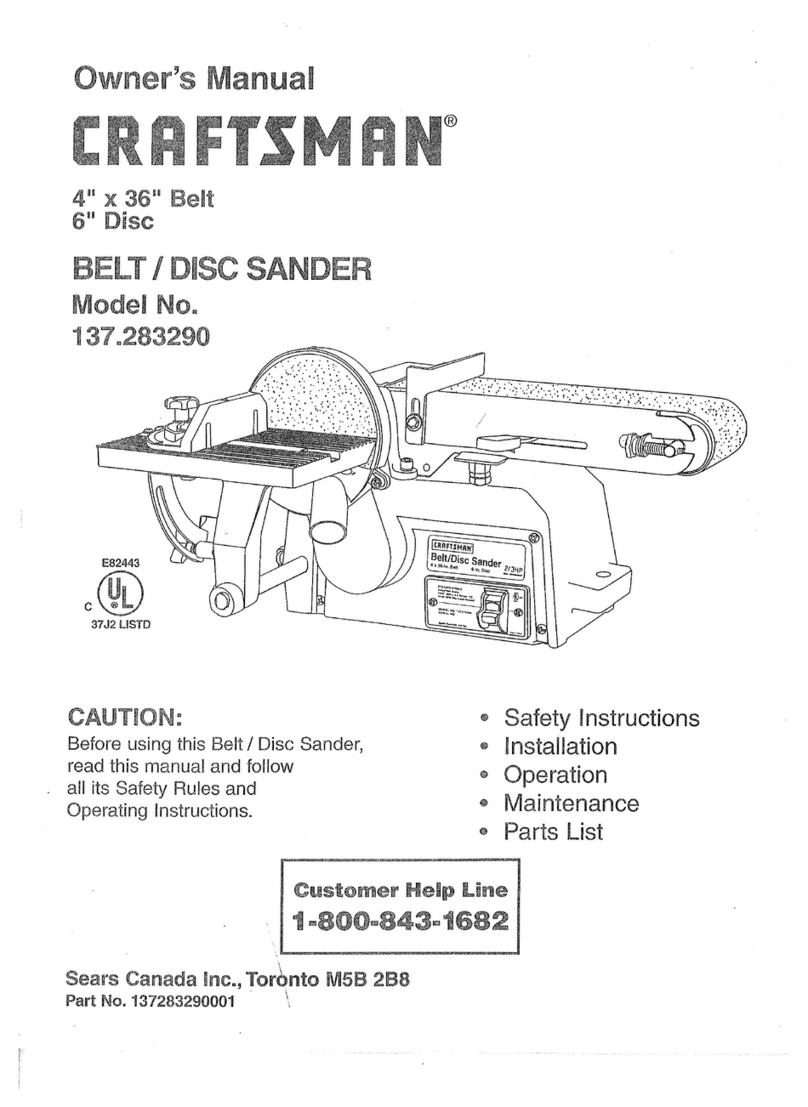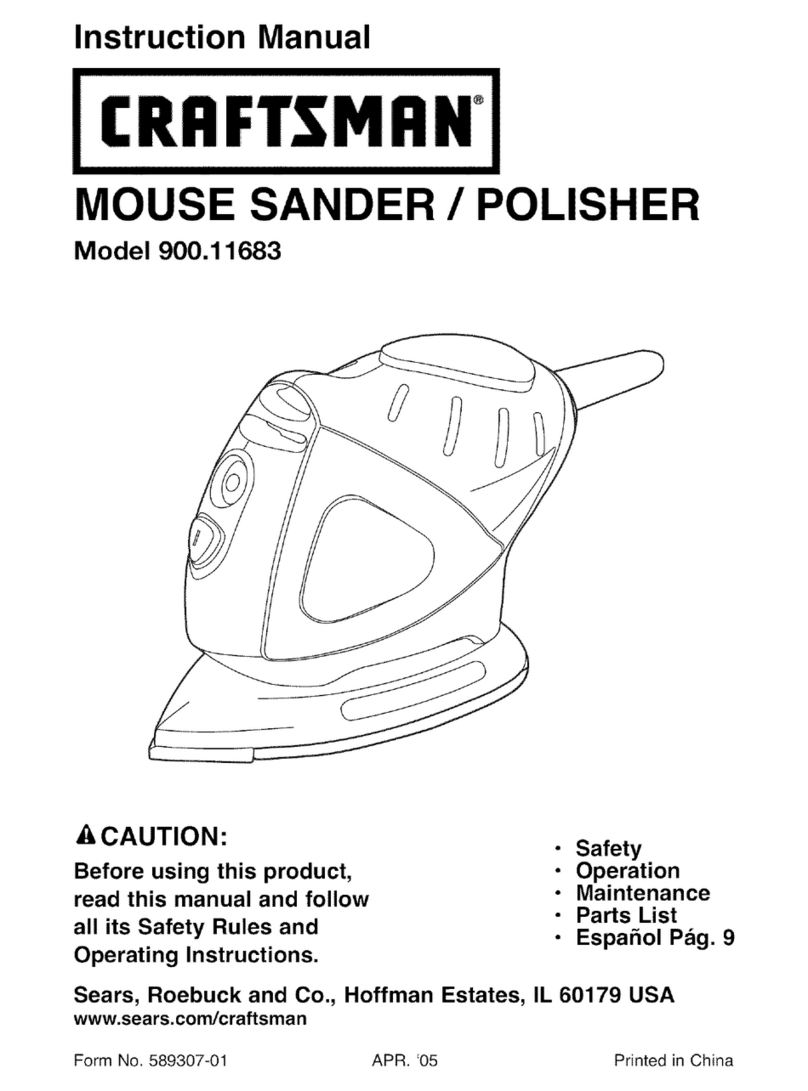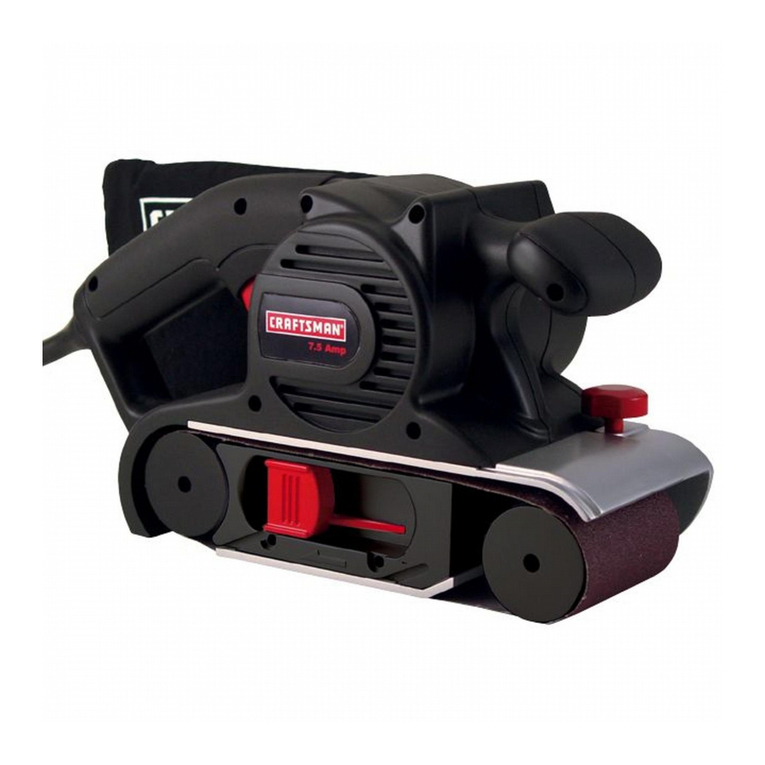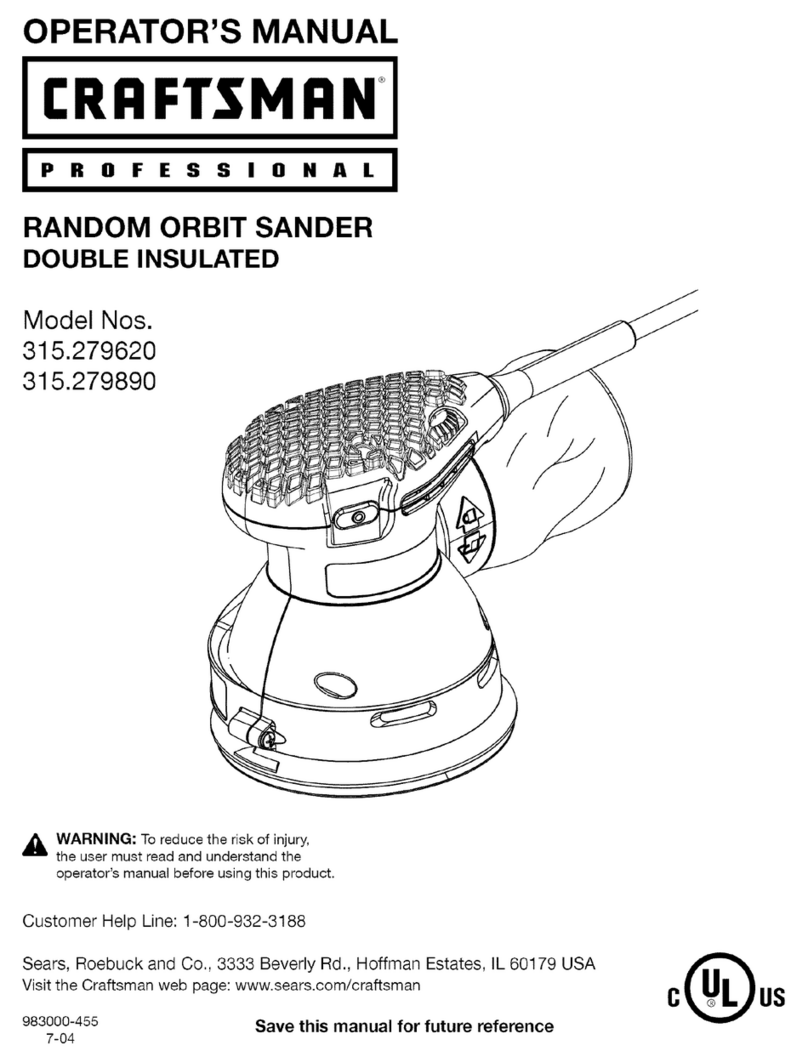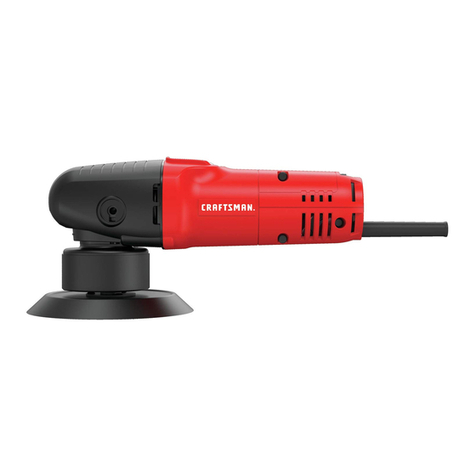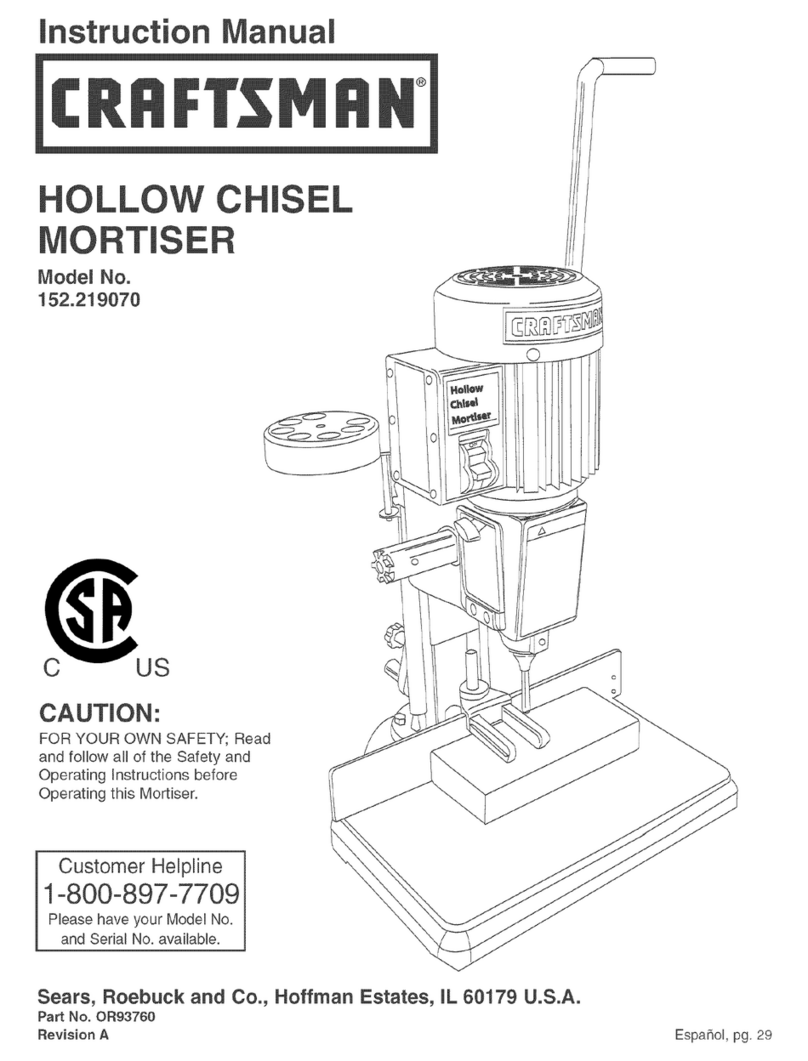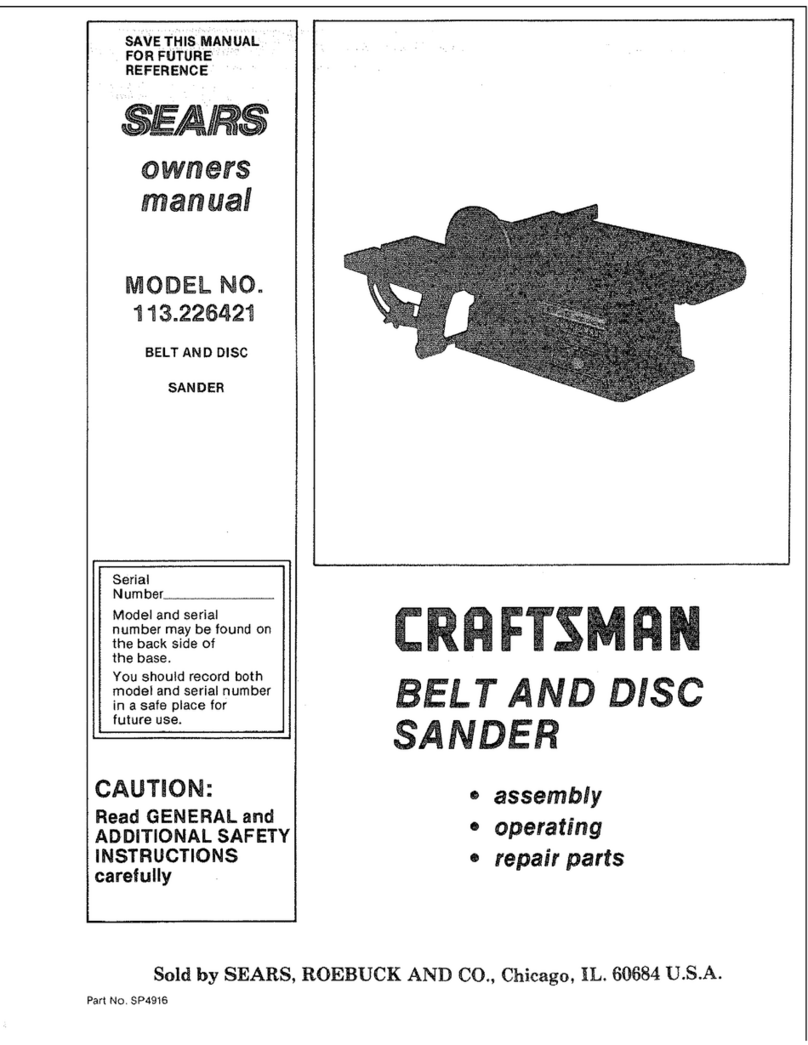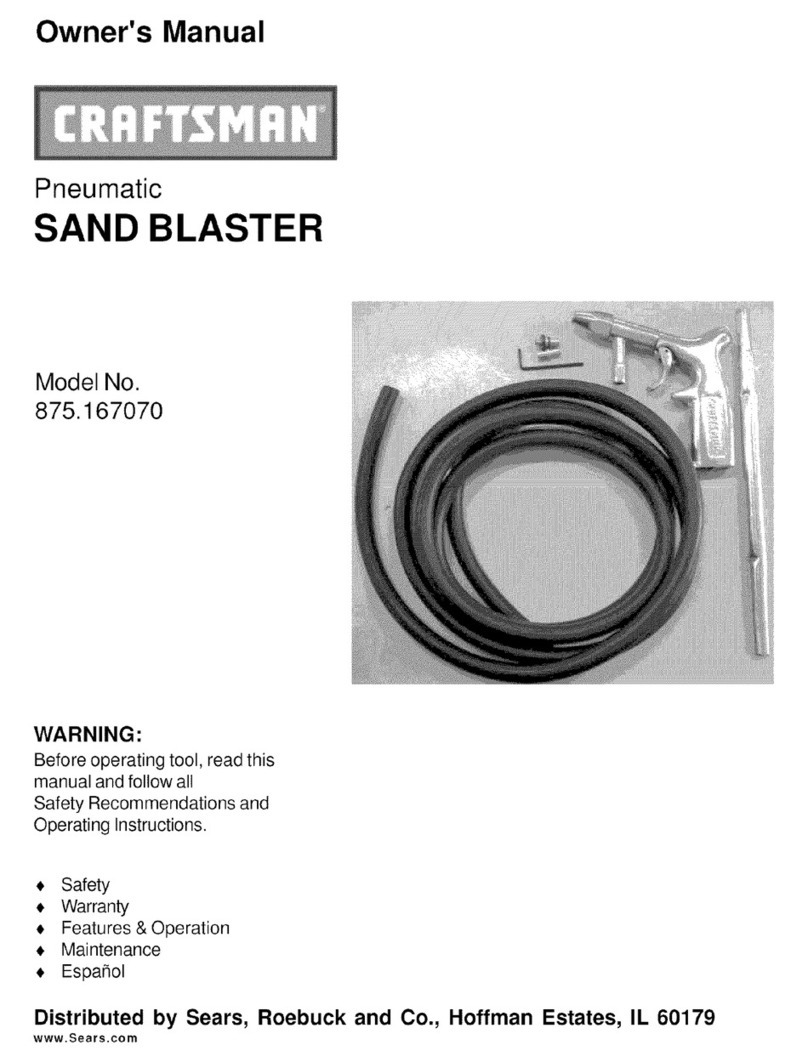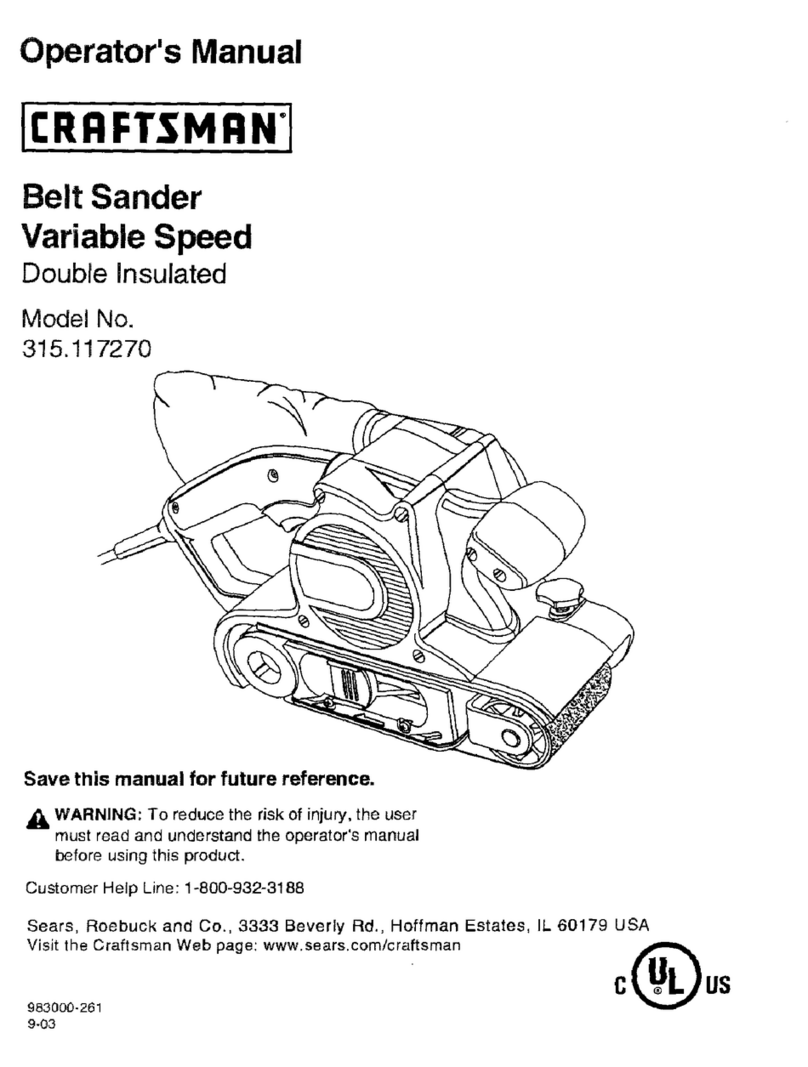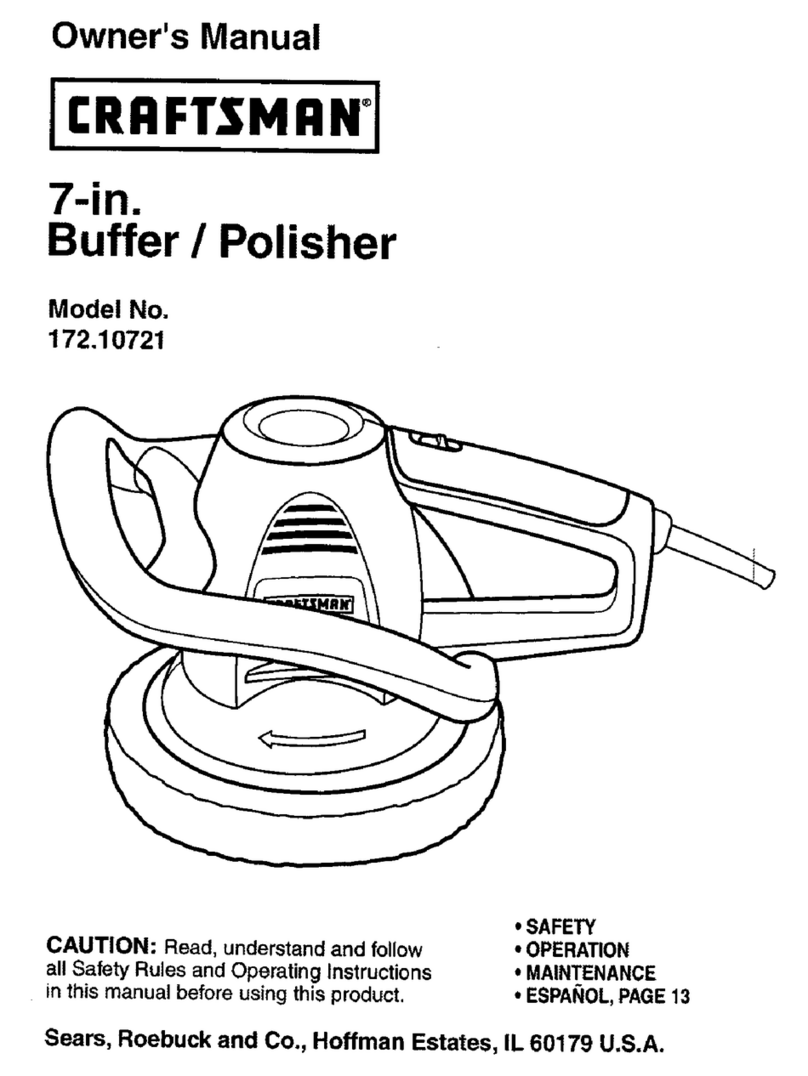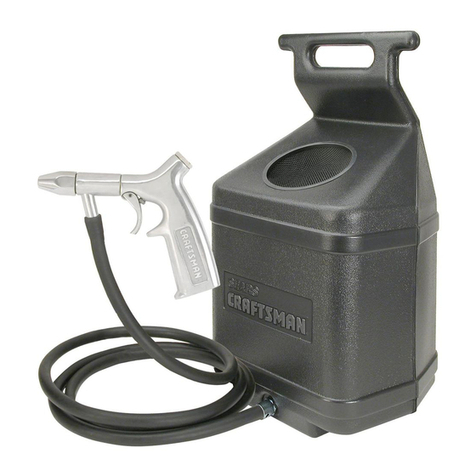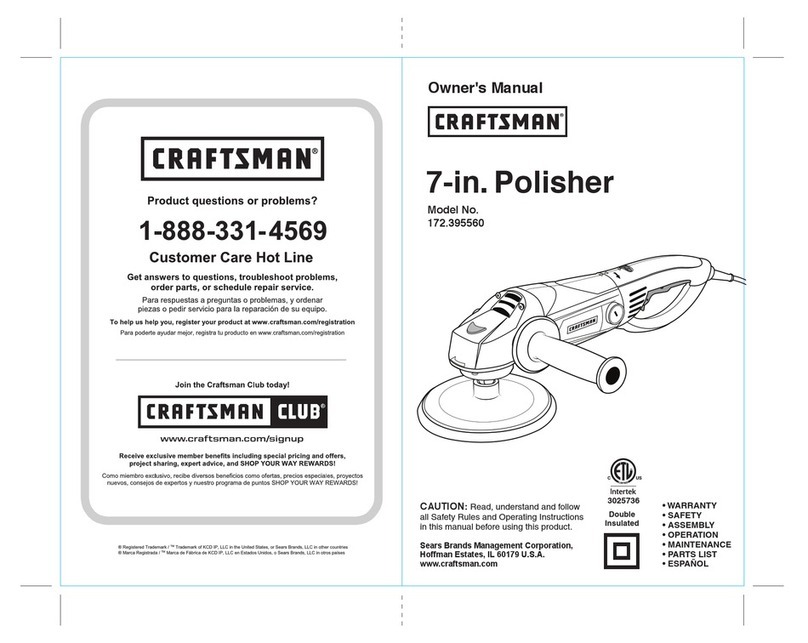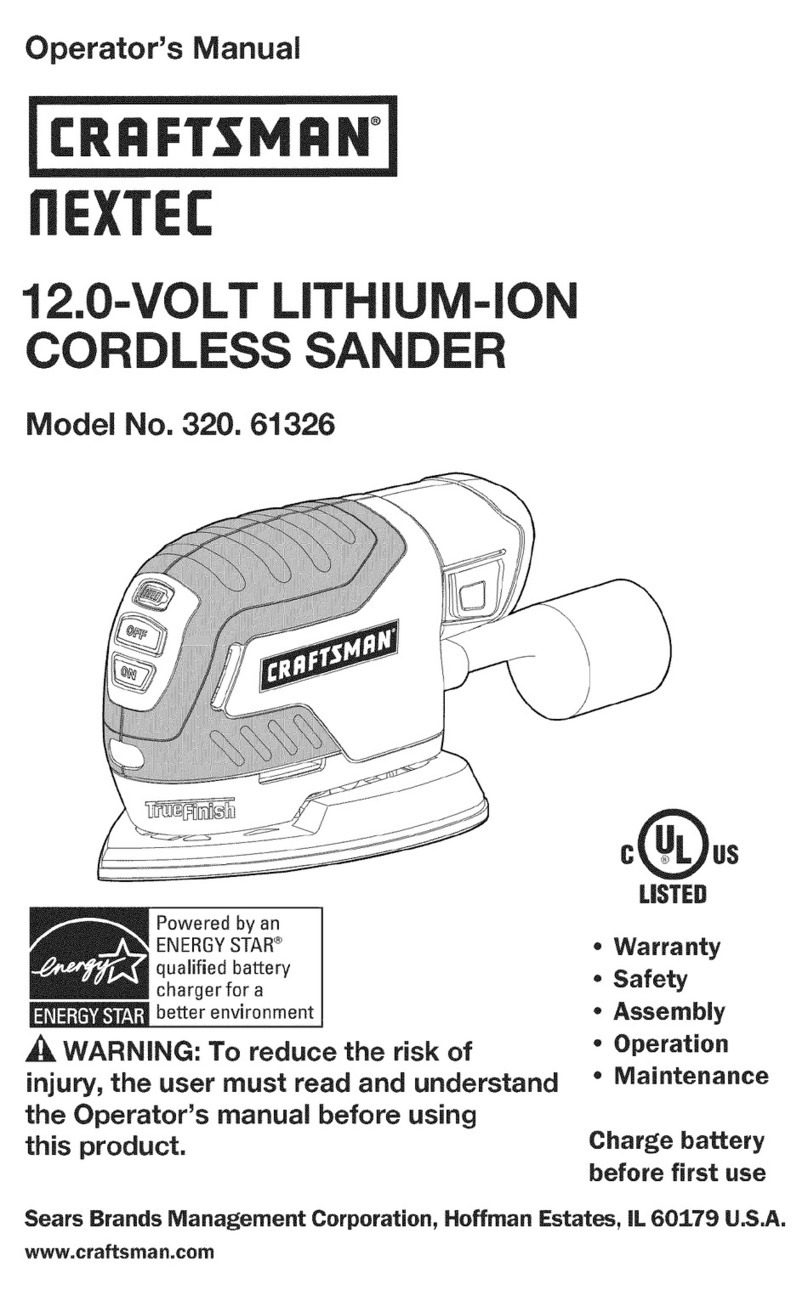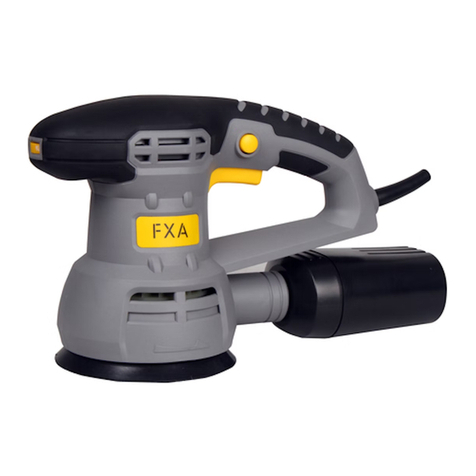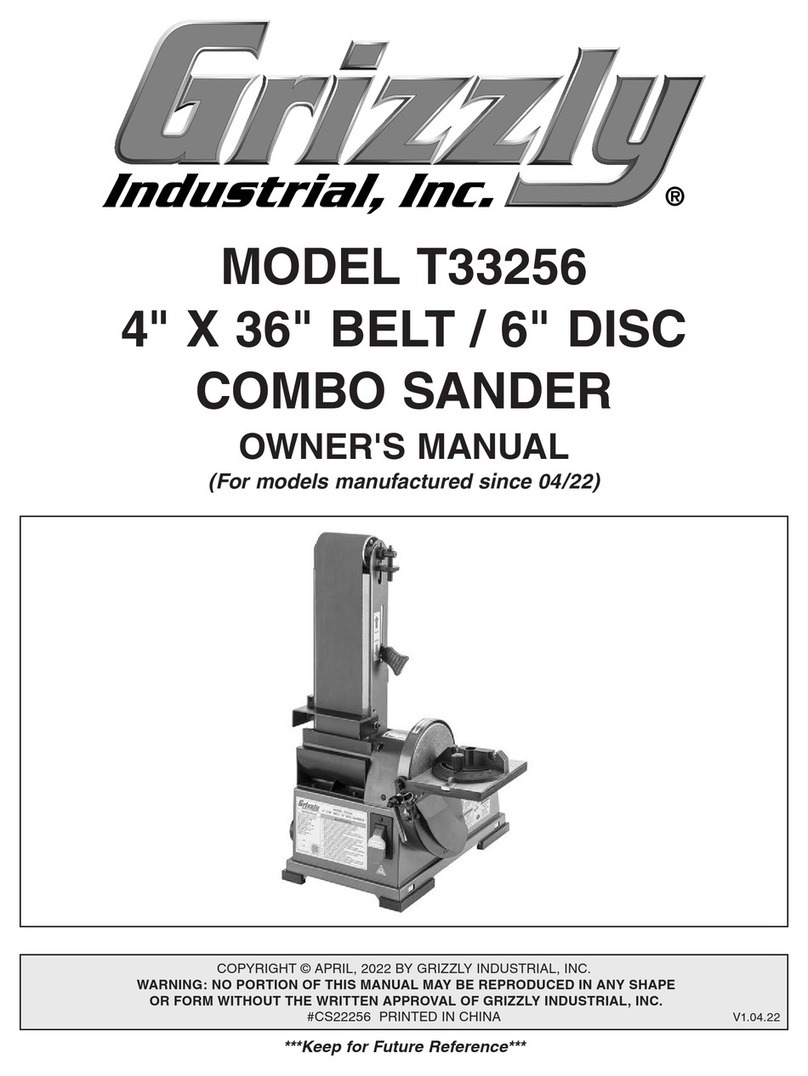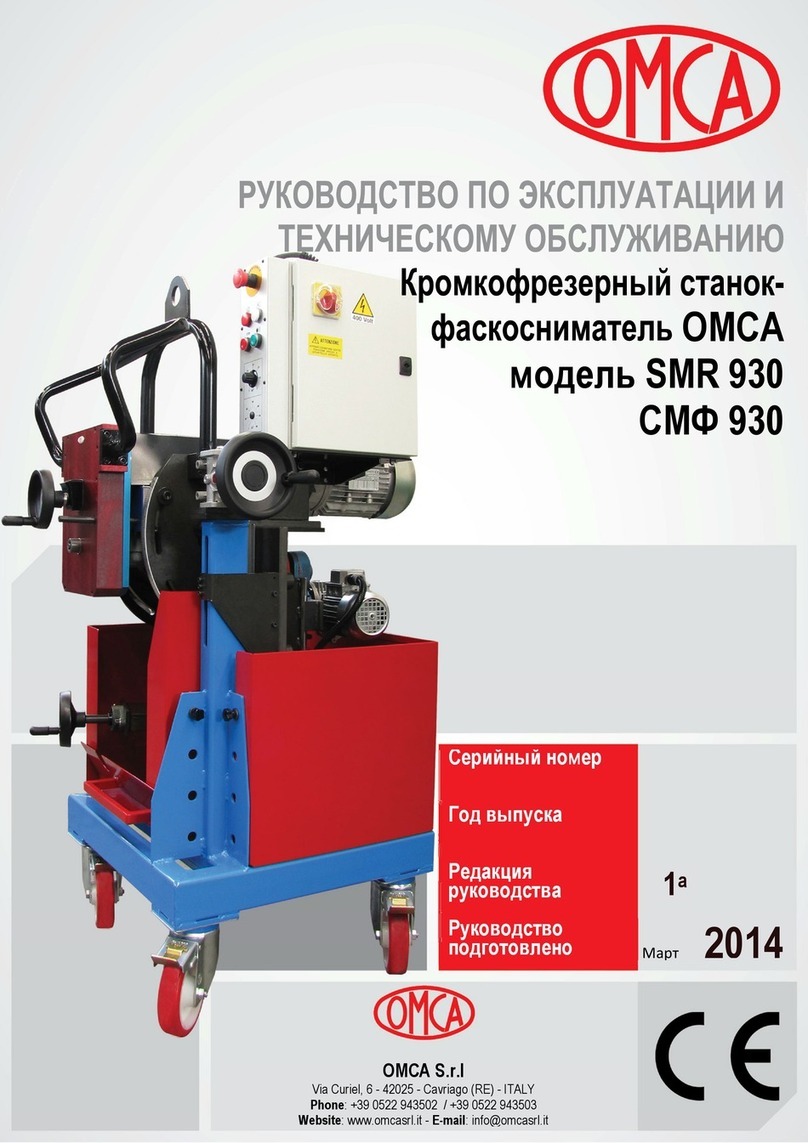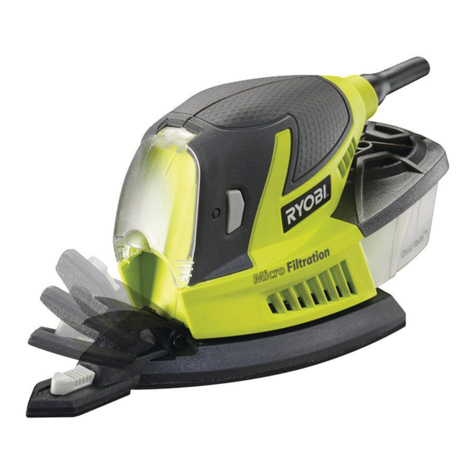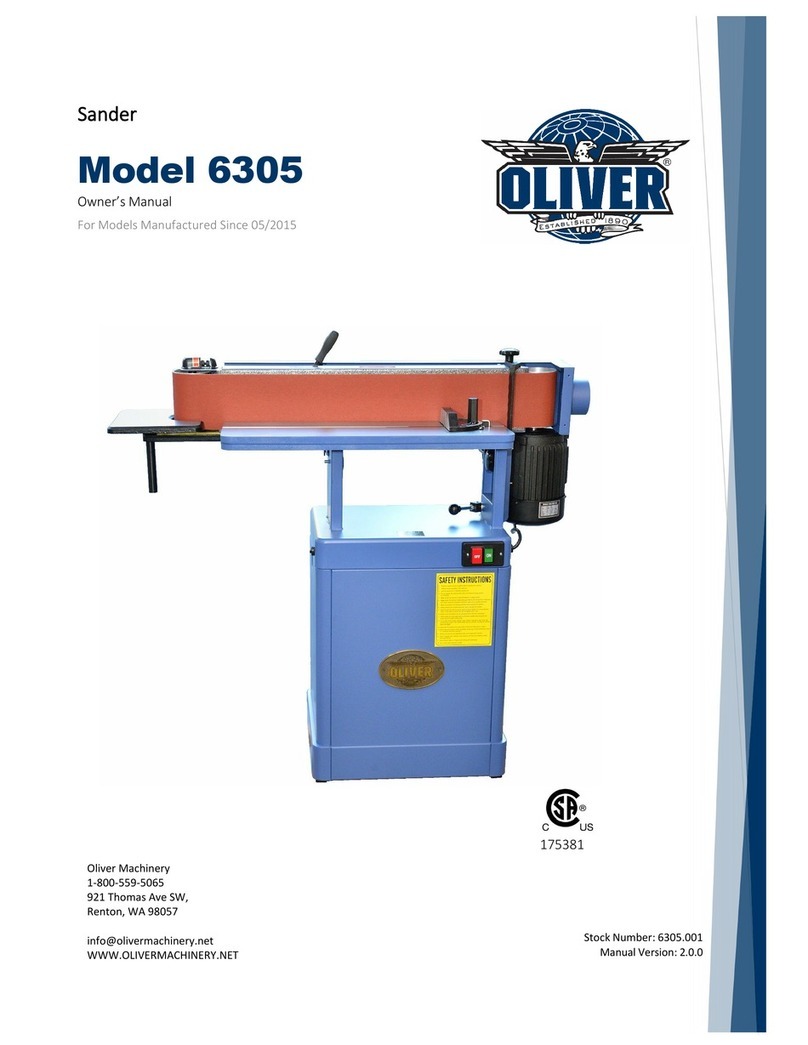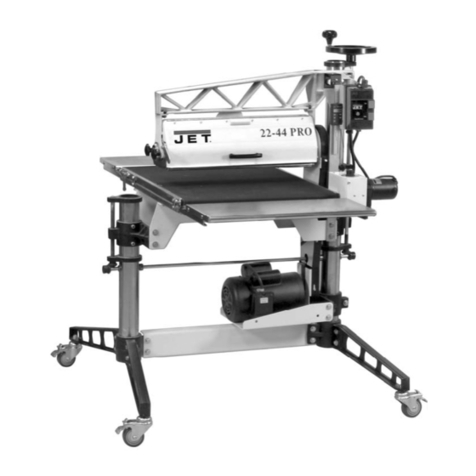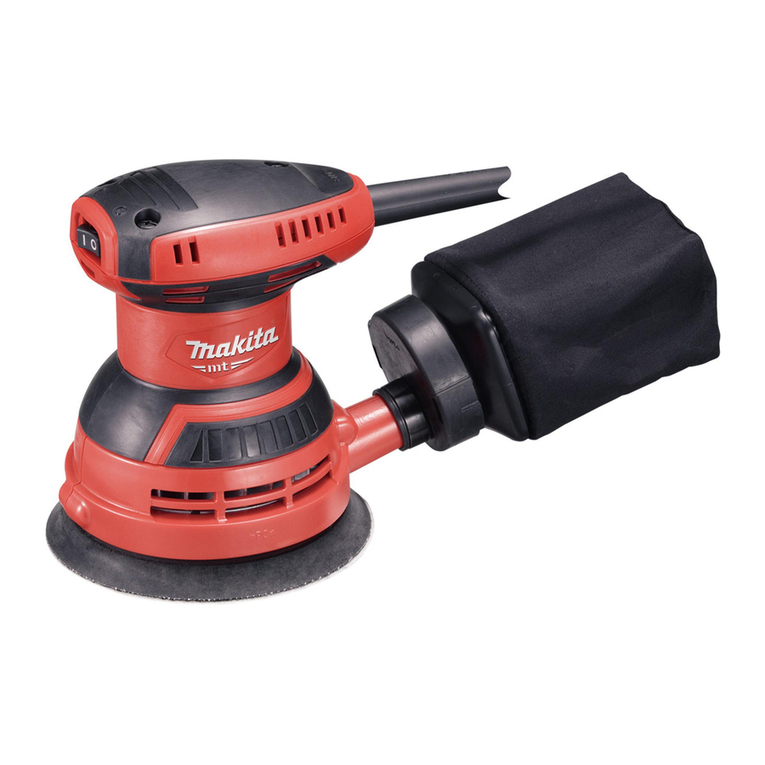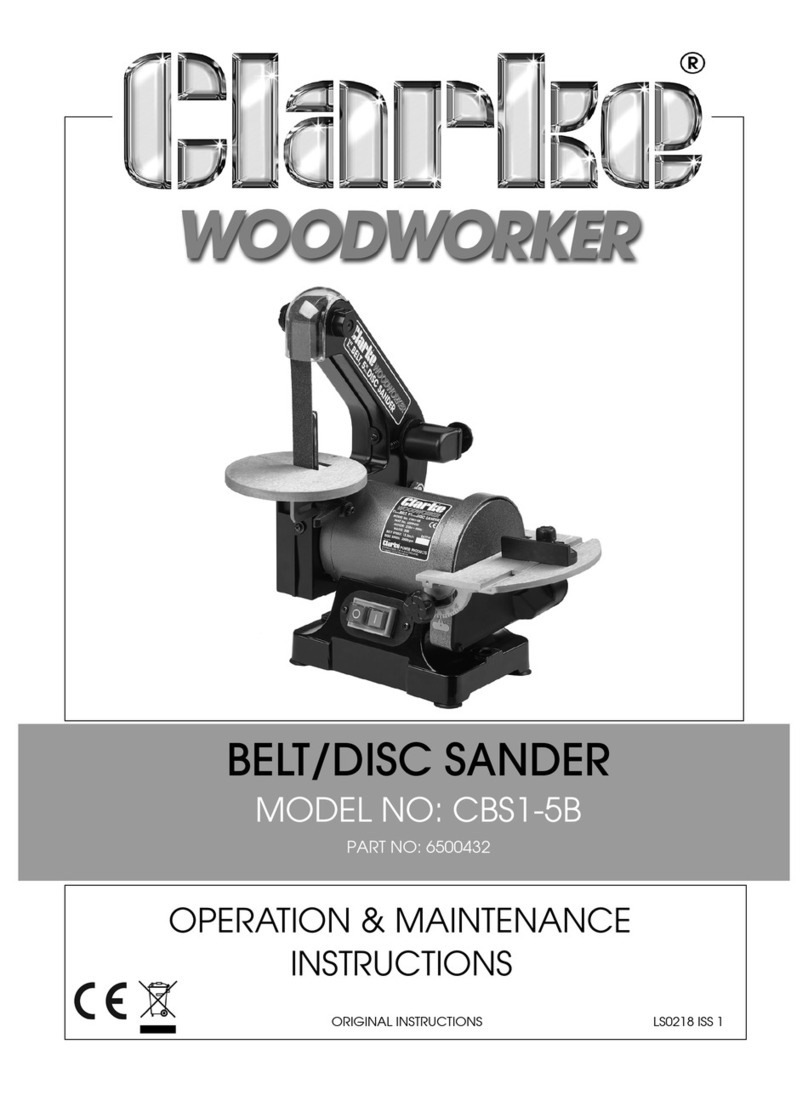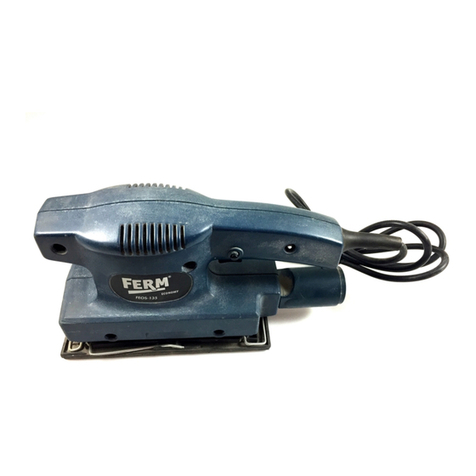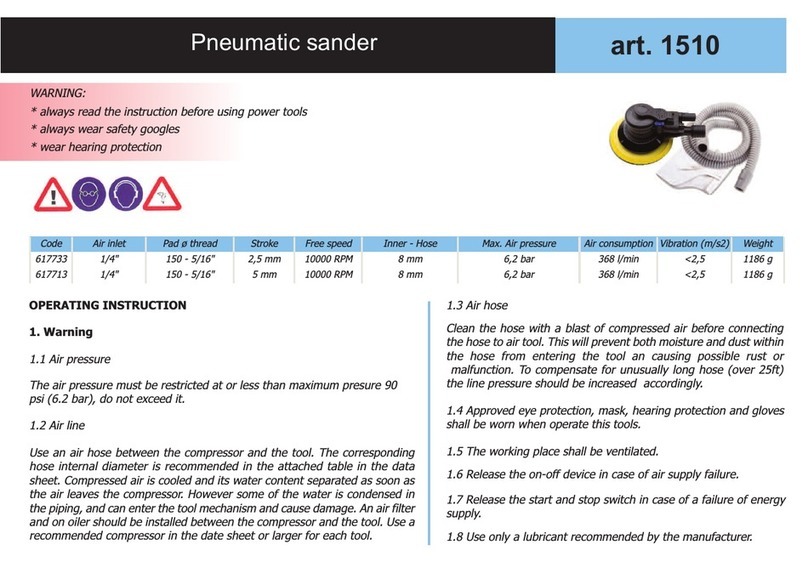J
Fig. 1
This sander has been designed so that it may be
driven from behind or below the belt table, The
direction of rotation of the sanding belt must be from
the idler pulley to the drive pulley across the top of
the machine.
Bolt the sander securely to its stand. This is import-
ant because of the considerable pull exerted by the
motor when the sander is operated at maximum
capacity.
Do not run this sander until oil reservoirs on all
bearings have been filled with a good grade of
machine oil similar to S.A.E No. 20. To fill oil reser-
voirs easily and completely, use an oil can with a
small spout, or a pressure oil can in order to displace
air in reservoirs.
Always keep oil reservoirs filled with oil.
This tool is equipped with new type bronze bear-
ings which meter filtered oil to the moving parts.
These bearings have invisible pores that become
saturated with oil. The heat generated by the turning
oI the shaft causes the lubricant in the reservoir to
automatically flow through these bronze bearings,
thus lubricating the moving shaft. When the shaft is
at rest, the oil is absorbed by the bearing.
Do not drill holes through the bearings to feed oil
to the shaft, as it is not necessary.
CONTROLS
A micrometer adjustment of the work table is ob-
tained with the knurled knob. (A in Fig. 1). The wing
nuts (B) lock the work table support arms at the an-
gle chosen. The screw (C) in the work table support
is adjustable and supports the work table when set at
45 °. The bolts (D) lock the belt table at any angle up
to 90°. After setting the fence square -with the belt
table clamp with the bolt (E) The knurled lock stud
assembly (F) holds the tension which is set with the
lever on the opposite side. The knobs (G) adjust the
tension independently on [he bearings on either side
of the idler pulley. The bolts (H) lock the tensioning
screws when the belt has been made to track pro-
perly. The screws (J) are adjustable to keep the idler
pulley shaft parallel with the drive shaft.
ADJUSTMENTS
Belt Tension
When replacing the sanding belt loosen the lock
stud (E in Fig. 2) and move the tensioner lever to
position (A). This will pull the idler pulley in to posi-
tion (B). Slip on the belt and move lever to position
(C). This will force idler pulley to position (D) thus
tightening the belt. The belt should be set at just
enough tension to give the belt the slack shown in the
lower half of Fig. 2.
CAUTION: DO NOT RUN THE SANDER WITH
TIGHT SANDING BELTS.
If moving the lever does not give enough travel on
the idler pulley, check the set screw in the idler pulley
bracket beneath the belt table. Tighten the square
head set screw on the tenmoner rack with only _,"
of the rack extending out of the casting.
Any additional tension changes required can be
obtained by moving the adjusting knobs (G in Fig. 1)
the same distance on both sides.
Adjustment of Belt
After the belt has been given the proper amount of
tension, start the sander with the motor. The belt must
track in the center of-both the idler and drive pulleys_
If belt tends to creep to either side loosen the lock
screws (H in Fig. 1) and tighten the knob (G) on the
side toward which the belt is moving. When belt
tracks properly tighten Both bolts (H).
Belt Table
The belt table may be varied from its normal hori-
zontal position to a vertical position by loosening the
